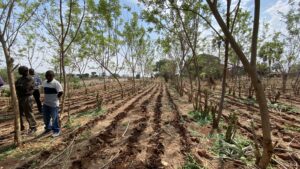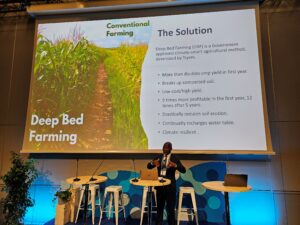Ahead of COP30, SIWI stressed that water must anchor the shift from climate commitments to implementation. With the negotiations in Belém now concluded, several outcomes move in this direction—while also exposing gaps that must be addressed if countries are to build real water resilience. This article summarizes the developments that matter most for water governance and what they signal for the path forward.
A clearer global framework for water resilience
One of COP30’s most important outcomes was the formal adoption of a set of indicators under the Global Goal on Adaptation (GGA). The official decision confirms that Parties agreed to an annex of 59 indicators covering the key domains where climate impacts are felt, including water supply and sanitation. This positions water services and water system resilience firmly within the global adaptation framework and reflects the growing recognition that climate impacts are experienced primarily through water—whether through scarcity, flooding, declining quality or pressure on infrastructure.
However, the indicators are voluntary, non-prescriptive and non-punitive. They will not automatically drive accountability or investment. Their value will depend on how countries interpret them, how they integrate them into national plans and whether they inform real monitoring and decision-making systems. Turning a global list into meaningful action will require alignment with existing governance arrangements, better data foundations and sustained attention to how water institutions and utilities can use this framework in practice.
Adaptation finance: political ambition, limited clarity
COP30 also produced a headline signal on adaptation finance. Countries agreed to “efforts to at least triple” adaptation finance by 2035—a recognition that current funding falls far short of what is needed, particularly for water-related adaptation.
Yet the details remain uncertain. The agreement does not define a baseline year, create binding requirements or specify how the scale-up will occur. For water systems—often the first point where climate impacts are felt—this ambiguity matters. Resilient water services, drought and flood management, protected drinking-water sources and reliable sanitation infrastructure all require long-term, predictable investment. How adaptation finance evolves after COP30 will therefore shape the pace and depth of water resilience efforts.
Integrated governance: essential for real resilience
One of the clearest signals from Belém is that climate action will not succeed if sectors continue working in isolation. The COP30 Global Climate Action Agenda describes adaptation and resilience as “core, cross-cutting pillars shaping how system transitions are designed, financed, and delivered.” This reflects a growing understanding that climate risks move through entire systems such as food production, public health, energy, ecosystems and cities and that water sits at the centre of all of them.
The outcomes from COP30 point to the need for approaches that connect what are often separate processes: water allocation, land-use planning, infrastructure decisions, disaster risk management and long-term climate strategies. Countries that align these systems will be much better positioned to turn global commitments into practical results on the ground.
This direction mirrors insights from processes where SIWI has contributed expertise, particularly on how water underpins many of the transitions highlighted in Belém. As countries start working with the new adaptation framework, integrated governance will be essential for making resilience achievable and not just aspirational.
Inclusion and local perspectives: a continued priority
Post-COP reflections underline that justice, local leadership and the experiences of affected communities remain prominent concerns. Climate impacts disproportionately affect people already facing water insecurity, and water governance that does not incorporate local knowledge, rights and participation is unlikely to succeed.
Whether strengthening shared-basin cooperation, improving sanitation access, planning for drought or building urban resilience, inclusive governance is a practical necessity. The work ahead must ensure that those most affected by climate impacts are part of the decision-making processes that shape adaptation responses.
What needs to happen next
COP30 did not resolve the climate–water crisis, but it did provide a clearer framework and important political signals. Now the responsibility shifts to countries and institutions to turn those signals into real progress. The adoption of adaptation indicators will only matter if they are embedded in national planning and used to inform decisions. The finance discussions will only have impact if they translate into predictable, long-term support for climate-resilient water systems. And the recognition of water as a core resilience issue must lead to changes in governance, investment priorities and institutional practice.
The coming year will shape whether these outcomes lead to meaningful action. World Water Week 2026, taking place in August, will provide the first major opportunity for governments, practitioners and researchers to explore the implications of the new adaptation framework and exchange practical approaches to strengthening water resilience. Later in the year, the UN Water Conference in December 2026 will offer a global stage to assess progress, reinforce cooperation and connect climate outcomes with broader water and development agendas.
Using these moments effectively will be essential for maintaining momentum and supporting countries as they translate international agreements into action on the ground. Water remains one of the most powerful levers for climate resilience and what happens next will determine whether the signals from COP30 become lasting results for communities and ecosystems.








